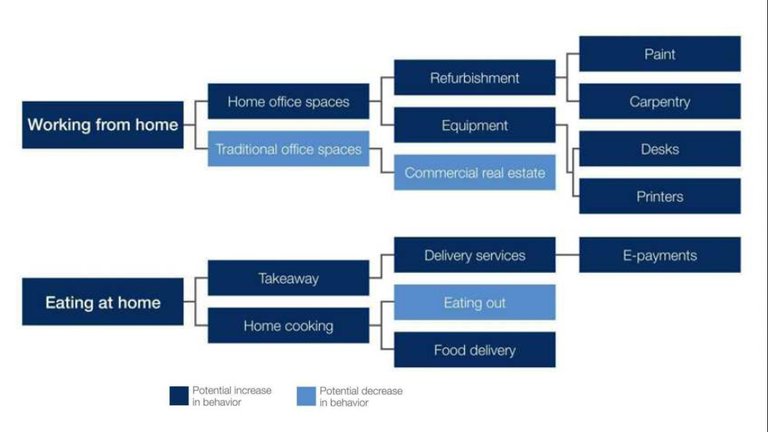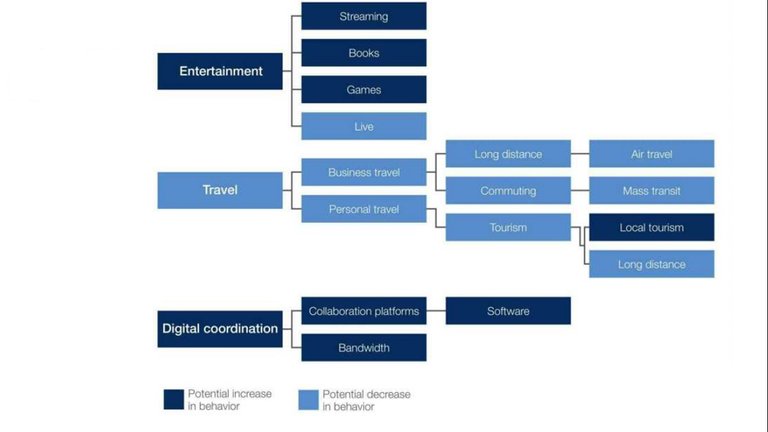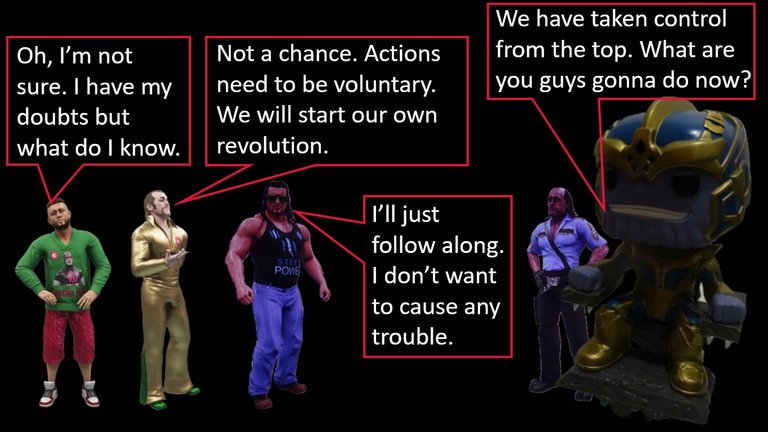Hi Everyone,

In Part 4, I discuss the ‘Micro Reset’ section of the book ‘Covid-19: The Great Reset’. To understand the content discussed in this post, I strongly recommend that you read Parts 1, 2, and 3. Part 1 introduces the book and Parts 2 and 3 discuss the ‘Macro Reset’, which is an important input used by the authors to make their predictions regarding the ‘Micro Reset’. As with the previous parts, I include my own commentary on the content. I discuss the aspects of the content I like and dislike as well as where I agree or disagree with the authors.
Micro Reset

The ‘Micro Reset’ section of the book moves away from the heavily prescriptive ‘Macro Reset’ section. Instead, it discusses possible changes that might occur in industries and individual businesses but these changes are influenced by recommendations made in the ‘Macro Reset’ section.
The authors predict that technology, health and wellness industries will continue to thrive post-pandemic. However, businesses in industries such as entertainment, travel, and hospitality will be forced to make significant changes if they are to thrive or even survive. The new environment is expected to favour larger businesses over smaller ones.
The 'Micro Reset' section is divided into two sub-sections. These sections are ‘Micro Trends’ and ‘Industry Reset’.
Micro Trends

The authors identified four areas of significant change for business; these are as follows:
- Acceleration of digitization.
- Building resilient supply chains.
- Greater involvement of Government in business operations.
- Stakeholder capitalism and environmental, social and governance (ESG) considerations.
The authors identified acceleration of digitisation as a significant change as restrictions imposed by Governments during Covid-19 forced businesses to operate remotely. The authors believe that businesses that switched to a digital approach will have a competitive advantage post-pandemic.
The authors believe that Covid-19 revealed vulnerabilities in supply chains. Restrictions on operation, movement and travel meant that supply chains broke. The authors believe a ‘just-in-case’ approach will replace a ‘just-in-time’ approach.
The authors predict that increased Government intervention during the pandemic will continue to occur post-pandemic. Governments have bailed out and supported businesses during the pandemic. However, the money provided has conditions that businesses will need to meet as they continue operations. Outsourcing of projects to private companies might be reduced post-pandemic. Thus, Government will have more control over essential products such as medical equipment.
The authors predict that businesses will shift away from shareholder and ownership goals and move towards stakeholder goals. Stakeholder goals are far broader as they would include employees, the community, and the environment. The authors predict that businesses will face more scrutiny in regards to governance.
Industry Reset

In this sub-section of the book, the authors predict possible impacts on business operations. They identify changes to how customers and businesses interact as well as changes in short-term and possibly long-term behaviour of customers. The authors also believe that businesses will attempt to increase their resilience.
Social interaction plays a significant role in the consumption of many goods and services. Travel and vacations, bars and restaurants, sporting events and retail, cinemas and theatres, concerts and festivals, conventions and conferences, museums and libraries, and education all involve some form of social interaction. However, the Covid-19 restrictions have greatly reduced the extent of social interaction. They predict that in the post-pandemic world, social interaction will remain restricted. Businesses will require social distancing. Many small businesses will not be able to survive with these new rules in place. However, larger businesses such as fast food giants will be able to remain profitable with the restrictions implemented.
The restrictions implemented during the pandemic has resulted in more people consuming from home. People cook their own food instead of visiting restaurants. They enjoy home entertainment instead of visiting cinemas and theatres. The authors predict that people will be more focused on hygiene and hygiene products as preventive measure to protect themselves from the pandemic and other viruses. Figure 1 contains examples of how the authors predict consumer behaviour will change.
Figure 1: Predicted changes in consumer behaviour


The authors discuss resilience in several sections in this book. In this section of the book, the authors discuss resilience in the context of consumer behaviour. The authors believe people will make a greater effort to remain or become physically and mentally well. They believe people will want improved public health so that people around them will also be well. The authors believe people will care more about the environment. They will reduce pollution so that the environment is healthier for everyone. They believe that people will become more interested in participating in sports but because of social distancing, e-sports is likely to be popular.
My views on the Micro Reset

If there is a ‘Macro Reset’, there will ultimately be a ‘Micro Reset’. The big picture affects the little pictures and vice versa. I agree with the overall observations of the authors regarding which types of businesses have struggled and can be expected to struggle post-Covid-19.
In regards to ‘Micro Trends’, I am in partial agreement with the authors. I believe there will be an acceleration of digitalisation. I believe businesses will attempt to increase resilience in their supply chains. I believe Governments will desire greater involvement in business activity. However, I consider this very undesirable. I believe businesses will resist intervention. I believe taxpayers will resist funding this intervention. I do not believe stakeholder capitalism will replace our existing mode of capitalism. Self-interest will remain dominant over collective interests for a sufficient number of people for stakeholder capitalism to be ineffective and uncompetitive. However, if Governments gain greater control over individual businesses and if industries become dominated by a few large businesses, a form of faux stakeholder capitalism could take shape. People could become tied to jobs because they will have minimal employment options. Their choices could be limited to either working for large corporations or Government agencies.
In regards to the ‘Industry Reset’, I agree with the authors. However, as I have mentioned several times in this series of posts, I believe it is the extreme Covid-19 restrictions and not Covid-19 itself that has caused the greatest harm. The restrictions have led to the decimation of many service industries and have caused enormous harm to small businesses. In the absence of the extreme restrictions, many businesses would still have struggled but they would have had a chance to manage their own risks and most businesses would have survived.
Human behaviour is often hard to predict. If the majority of people are greatly concerned about Covid-19 and future outbreaks, it is likely, at least initially, they will desire a healthier lifestyle. As Covid-19 becomes a more distant memory, people are likely to revert to their previous habits. Due to the restrictions, there will be more people suffering from mental illness. I doubt this group would be actively focusing on improved physical health.
Continued in Individual Reset.
More posts

If you want to read any of my other posts, you can click on the links below. These links will lead you to posts containing my collection of works. These 'Collection of Works' posts have been updated to contain links to the Hive versions of my posts.
My New CBA Udemy Course
The course contains over 10 hours of video, over 60 downloadable resources, over 40 multiple-choice questions, 2 sample case studies, 1 practice CBA, life time access and a certificate on completion. The course is priced at the Tier 1 price of £20. I believe it is frequently available at half-price.
Future of Social Media





